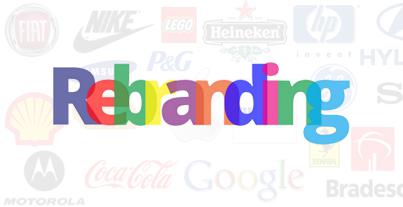Perform a quick online search about how to plan a rebrand, and you’ll be met with a plethora of tick lists and steps to take. Whilst many of these strategic and practical steps are important, many gloss over one of the biggest hurdles you’ll face: overcoming internal resistance and securing approval for your rebranding plan. Rebranding is an enormous decision. It takes courage. The rewards can be worth it. Walmart is an excellent case in point. It can also, occasionally, go wrong. Take GAP’s rebrand in 2010 as a dismal example. It’s understandable, therefore, that you may encounter some resistance to a rebranding exercise. However, rebranding can, as Walmart and many others show, be immensely profitable and worthwhile. If you have judged that the time is right for your rebrand, how do you get others on board?
Get buy in early
Once your mind starts whirring on rebranding possibilities, it’s easy to get carried away. However, you need to advocate for change first, and achieve the buy-in you need to carry the rebranding exercise through to conclusion. To do this, you need to be able to advocate for change based on powerful arguments. There are a number of different reasons why it may be a good time for your business to rebrand. These include:
- Mergers and acquisitions
- Moving in to a new area or repositioning
- Going global
- Changes to the market which require you to reinvent yourself e.g. environmental pressure
- Bad reputation
- New leadership
- The brand image is outdated
It is worth taking the time to research the issues which are applicable to you, so that you can lend some weight to your argument with examples of other successful rebrands done for the same reasons.
Consider financial implications
Rebranding can be a costly exercise. The only way to secure approval for your rebranding exercise is if you approach this through a financial lens. Do a cost-benefit analysis and be realistic about the costs involved in rebranding. Demonstrate to senior leadership that you have considered all costs, as well as Return on Investment. Rebranding costs aren’t only limited to the costs of creative design. Remember that these will need to be implemented uniformly across the business, in everything from your stationery to your social media profiles. Rebrands do well when there is concerted input at the launch stage too.
Be strategic
Therefore, the overall approach to securing buy-in must be strategic. Use data and facts to create this strategy. All this needs to happen before you consider the snazzy changes of logos and the like. When you present this information to senior executives, in a more strategic way, they will be more persuaded about the benefits and outcomes of the rebranding exercise. Also, by being honest about the risks, they will also feel reassured that you have indeed considered these, and aren’t simply avoiding the negative. Indeed, you should identify all possible risks of rebranding, and consider how you will mitigate these. Consider your role, at this stage, as an educator and negotiator. The result will be that the stakeholders who matter will feel trust towards you, and feel energised for the rebranding exercise. This step does take time. However, it is incredibly valuable.
Gathering information
This doesn’t mean that you need to undertake this step alone. Indeed, if you contact us in advance, regarding your creative strategy, then you’ll be in the position of being fully-informed about the process. You’ll have a clear idea of timelines and costs. This will allow for clear budgets in your rebranding plan, rather than guesswork.
Tackling resistance
It isn’t unusual to experience some resistance to your attempts. However, don’t despair. Consider why an individual stakeholder is resisting the change. Use this information to do further research and cost-benefit analysis in regards to their particular concern. Help them to see that the benefits of the exercise will outweigh the costs, while also reassuring them that you take their concerns seriously.
Getting ready for a rebrand
Choosing your agency for a rebranding exercise also requires careful thought. Speak to the agency directly about rebranding exercises they have done, and the results they have seen. Ask for examples of their work in your industry and ask for initial costs. At Branding By 8 we are skilled and experienced rebranding experts, fully understanding how rebranding fits in to your whole marketing strategy. Furthermore, we understand the need for you to secure approval. We’ll work with you to make it happen.


